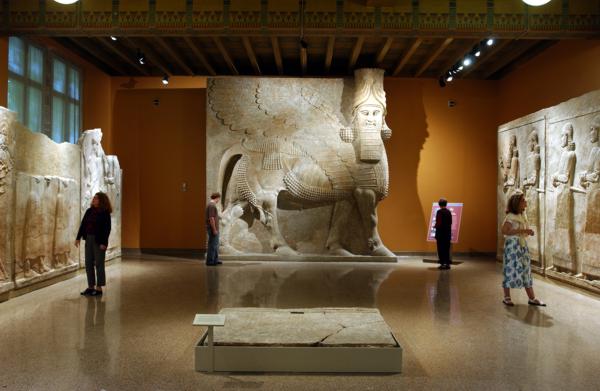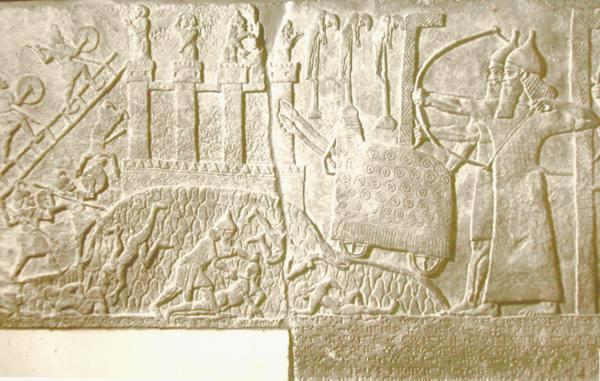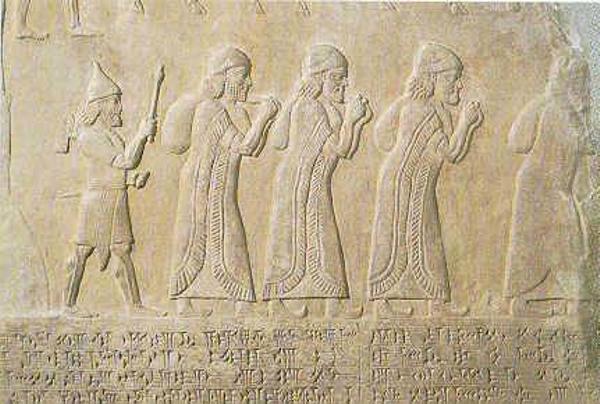





As was the custom of Assyrian kings, Sargon II (721-705 B.C.) inscribed his annals in word and picture on stone slabs that lined the palace walls.
From Sargon II: Inscriptions of a General Nature, "Pavé des Portes," No. IV, lines 31-44. Published by H. Winckler, Die Keilschrifttexte Sargons (Leipzig, 1889), 1, 147 f., II, Pl. 38. Translation: Luckenbill, AR, II, §99.
(Property of Sargon, etc., king of Assyria, etc.) conqueror of Samaria (Sa-mir-i-na) and of the entire (country of) Israel (Bît-Hu-um-ri-a) who despoiled Ashdod (and) Shinuhti, who caught the Greeks who (live on islands) in the sea, like fish, who exterminated Kasku, all Tabali and Cilicia (Hilakku), who chased away Midas (Mi-ta-a) king of Musku, who defeated Musur (Mu-u-ri) in Rapihu, who declared Hanno, king of the country Ia', a district on Cyprus (Ia-ad-na-na), (who) dwell (on an island) in the sea, at (a distance of) a seven-day journey.